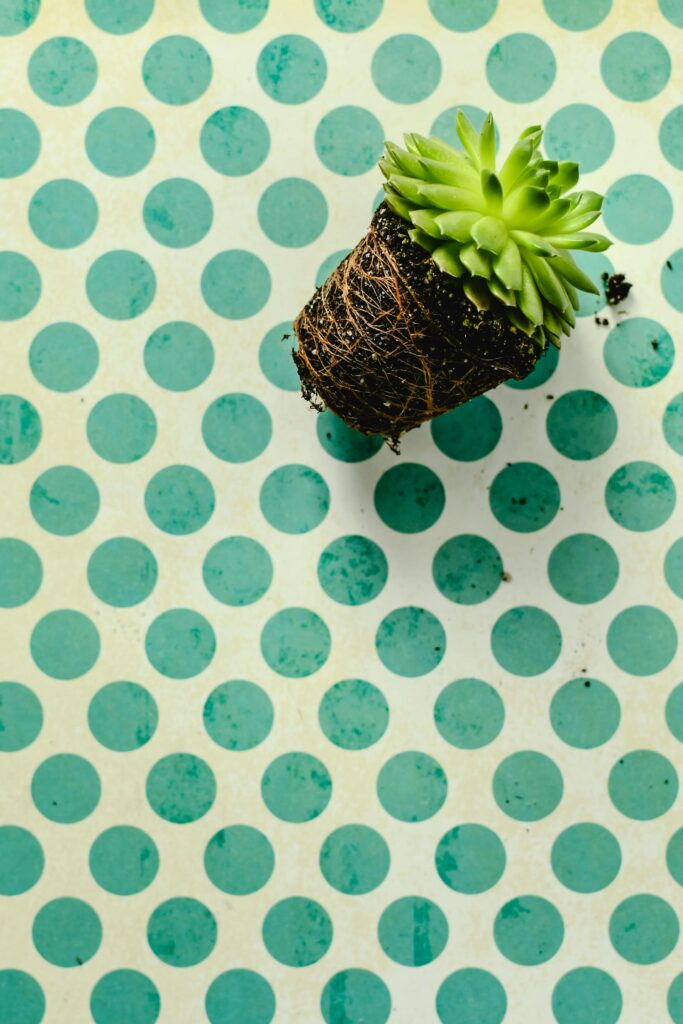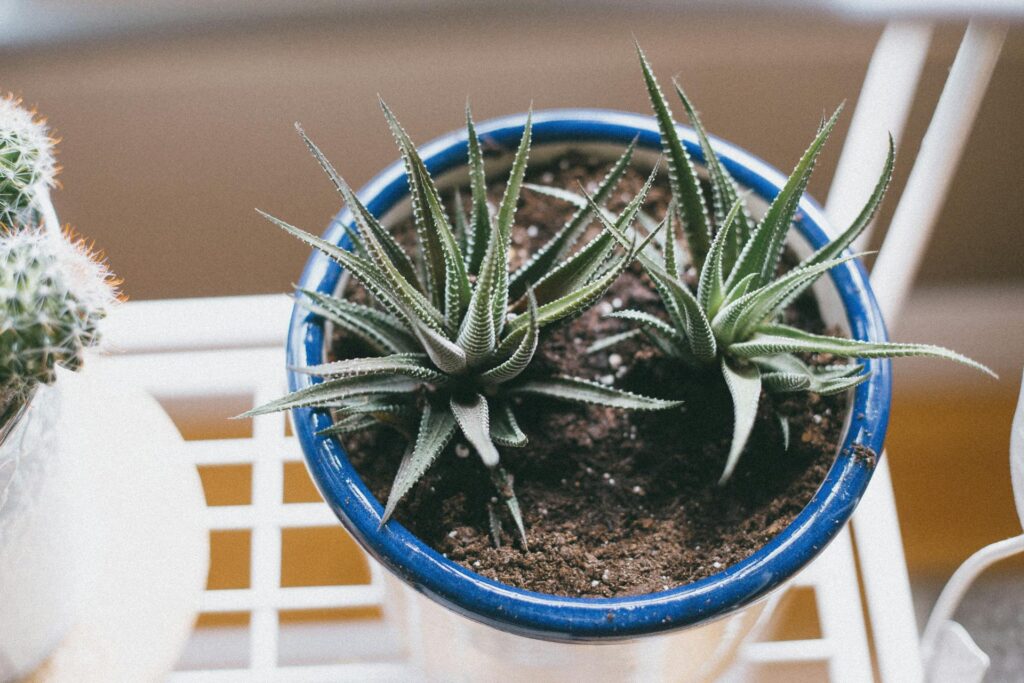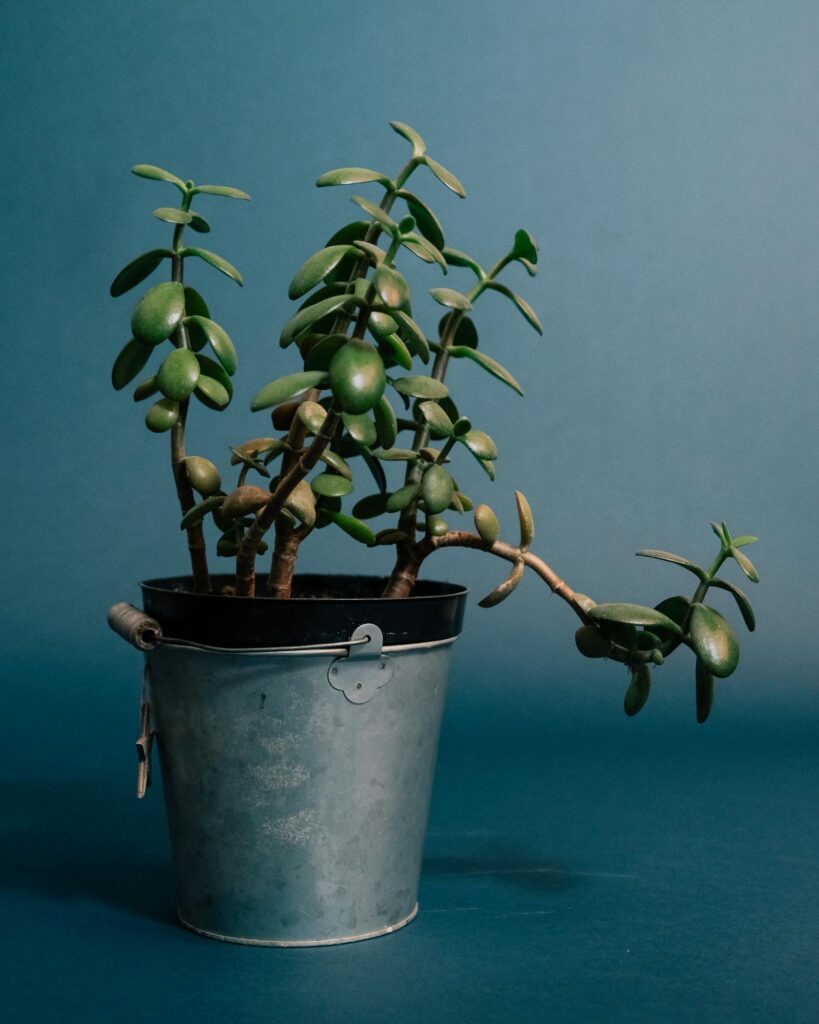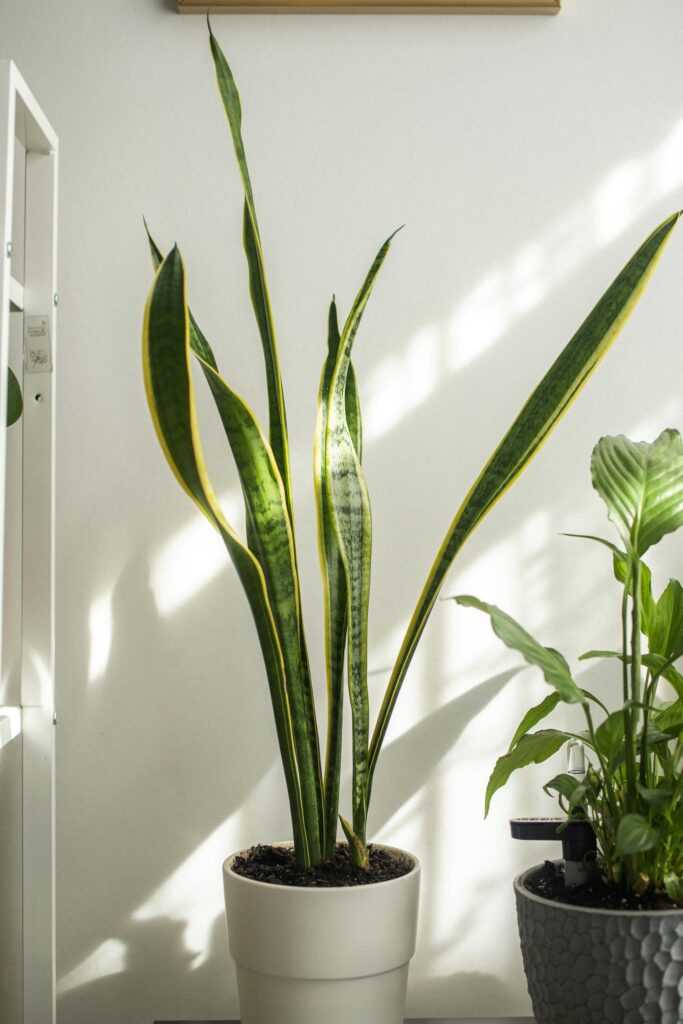5 beautiful succulents you can bring home in summer
People who like to garden and people who love plants are both looking for long-lasting, low-maintenance friends that can stand up to the intense summer sun. In this field, succulents are the bright stars because they come in such a wide range of shapes, colors, and textures and do so well in the summer. Because they can survive in a wide range of situations and store water in their thick leaves, succulents have become popular for growing both inside and outside.
This piece will show you the five best kinds of succulents that do well even in the hottest summer weather. Whether you’re an experienced gardener looking to add to your collection or a beginner with a green thumb ready to start growing plants, these succulents will captivate you with their beauty and sturdiness.
Whether you live in a dry desert area or a humid coastal area, these plants will not only add a bit of natural beauty to your home, but they will also make you feel calm and at peace during the sweltering summer months. Get your planting tools ready, fill up your pots, and get ready to learn about the five best succulent plants that will make your yard or home a summer oasis. Let’s learn about plants and how to create a garden that is strong, hardy, and looks good.
Things to Keep in Mind When Choosing Summer Succulents
People who like to garden often choose succulents because they are bright, easy to care for, and can handle the extreme summer heat. Choosing the perfect plants for the summer months, on the other hand, needs considerable study. Here are some important considerations to make while choosing succulents that will grow and flourish during the hottest months of the year:
Drought Tolerance: Succulents are well-known for their ability to store water in their leaves, stems, or roots, making them well-suited to dry circumstances. Prioritize plants with good drought protection when picking succulents for the summer.
Sunlight Requirements: When it comes to sunlight exposure, plants have different tastes. While most plants grow in bright light, not all can withstand extended exposure to direct, strong sunshine. Consider the position of your succulents, and choose varieties that are well-suited to the available light conditions. This will ensure that your plants get enough sun without becoming burned during the peak summer hours.
Heat Tolerance: In addition to sunshine, plants’ general temperature and heat tolerance must be considered. Some succulents are highly hardy and can survive hot temperatures, while others may suffer. If you live in an area with exceptionally hot summers, choose heat-tolerant succulents that thrive in such conditions. This will help to maintain your plants’ bright colors and overall health throughout the summer season.
While succulents are known for their drought resistance, it is important to understand their watering needs during the summer. Although these plants require less water than typical houseplants, they still need regular hydration to grow. Strike a balance between giving adequate moisture and avoiding overwatering, since both can lead to root rot. Make sure the dirt is well-drained and leave it to dry between waterings. Watering regularity should be changed based on the succulent type and the environmental factors in your area.
Growth and Location: Consider the growth habit and size of the succulents you select, especially if you plan to cultivate them in containers or have limited space. Some succulents form compact rosettes and are therefore great for small pots or groupings. Others grow vertically and may require more room. Understanding your succulents’ growth trends and potential size can help you plan their location and ensure they have enough space to thrive.
5 best succulent plants for summer
The Best Succulent Plant #1: Aloe Vera
Aloe vera, sometimes known as the “plant of immortality,” is a flexible and popular succulent noted for its multiple health benefits and aesthetically pleasing appearance. Aloe vera stands out as a sturdy and low-maintenance plant that grows in warm and arid areas, thanks to its unique rosette of thick, fleshy leaves with spiky edges. Let’s look at its description, characteristics, summer care tips, and fantastic benefits and uses.
Description and characteristics:
Aloe vera is an annual plant native to North Africa’s desert climes. It is part of the Aloe genus and the Asphodelaceae family. The plant usually grows as a rosette with thick, lance-shaped leaves that can grow up to one foot long. The leaves are green and meaty, with a clear gel-like material inside that gives the plant its healing powers. Aloe vera also creates long flower spikes covered with tube-like yellow or orange blooms, which adds a lovely touch to its overall appeal.

Summer Care Tips:
Aloe vera is well-suited to summer settings since it is heat and drought-resistant. A few care tips, however, can help promise its ideal growth during this season:
Sunlight: Aloe vera grows best in bright, indirect sunshine. Place it in an area where it will get plenty of light but will not be exposed to straight, bright sunlight for long periods of time, as this might cause burns.
Watering: While aloe vera is drought-tolerant, it still has to be watered on a regular basis during the summer months. Water heavily but seldom, letting the soil dry between waterings. Overwatering can cause plant rot, so it’s critical to keep the dirt well-drained.
Soil: Use a well-draining soil mix made especially for succulents or cacti. To avoid waterlogging, Aloe Vera likes earth with proper aeration and drainage.
Temperature: Aloe vera grows best in temperatures ranging from 55°F (13°C) to 80°F (27°C). It can handle greater temperatures in the summer but should be protected from extreme heatwaves.
Benefits and Uses:
Aloe vera holds a range of beneficial qualities, making it a sought-after plant for various purposes:
Skincare: Aloe vera juice includes vitamins, minerals, antioxidants, and enzymes, making it a popular ingredient in skincare products. It can soothe sunburn, hydrate the skin, reduce irritation and inflammation, and aid in wound healing.
Digestive Health: Aloe Vera juice, taken from the inner gel, is frequently eaten for its possible digestive benefits. It may help with acidity, bloating, and digestive health.
Support for the Immunological System: Aloe Vera includes chemicals that are thought to help the immunological system. Regular intake or topical treatment may aid in the building of defenses and the fight against certain illnesses.
Nutritional Value: Aloe vera includes vitamins A, C, and E, as well as minerals such as calcium, magnesium, and potassium. Aloe vera gel or drink added to a well-balanced diet can provide extra nutritional benefits.
House Plant Décor: Aloe Vera, in addition to its medical benefits, adds a bit of natural beauty to indoor settings. Because of its distinct look and low care needs, it is a popular choice for adding greenery to homes and businesses.
The Best Succulent Plant #2: Echeveria
Echeveria is a succulent plant group that includes a wide variety of species that are known for their rosette-shaped, fleshy leaves and enticing array of colors and textures. These famous ornamental plants are native to Mexico and Central America, and their distinct features make them perfect for both indoor and outdoor gardening. Let’s look at the Echeveria description, features, summer care tips, benefits, and uses.
Description and characteristics:
The rosette growth habit of Echeveria plants, with thick, fleshy leaves growing from a center point, is well-known. The leaves come in a variety of sizes, from elongated to spoon-like, and are frequently decorated with appealing textures, patterns, or powdered coats. Echeverias come in a range of colors, including green, blue-green, pink, purple, and even crimson.

Summer Care Tips:
To ensure the best growth and health of your Echeveria plants during the summer season, consider the following care tips:
Sunlight: Echeverias grow in bright sunlight, so make sure they get at least six hours of direct sunshine each day. However, in places with high summer heat, provide some shade from the hot afternoon sun to prevent leaf burn. Place them near a sunny window or give them artificial grow lights to meet their light needs if grown indoors.
Watering: While echeverias are drought-tolerant, plants still need to be watered on a daily basis during the summer months. Water deeply but seldom, leaving the soil to fully dry between waterings. Overwatering can lead to root rot and other problems. Echeverias likes to be beneath rather than above water.
Soil and drainage: Use a well-draining soil mix made especially for succulents and cacti. To avoid undue moisture buildup around the roots, good drainage is important. To improve drainage, try adding perlite, pumice, or coarse sand. Make sure the pot or container you choose has draining holes to let extra water drain.
Temperature and Air Circulation: Temperatures ranging from 60°F (15°C) to 80°F (27°C) are best for echeverias. They can withstand greater temperatures, but proper air circulation is needed to avoid heat stress. Proper ventilation reduces the frequency of fungal illnesses by preventing the accumulation of excess humidity.
Benefits and Uses:
Echeveria plants offer more than just visual charm. Here are some perks and uses related to these captivating succulents:
Ornamental Purposes: Echeverias are priced for their visual appeal and are frequently utilized in parks, fields, and beautiful plant arrangements. Because of their bright colors, unique leaf shapes, and symmetrical rosette development, they are a wonderful choice for adding texture, interest, and flashes of color to any scene.
Low-Maintenance Houseplants: Echeverias are low-maintenance plants that are great for home gardening. They can grow in pots or tubs, requiring little care but still giving an enticing look as houseplants.
Drought Tolerance: Echeverias, like other plants, can store water in their leaves, allowing them to survive times of drought. Their water-saving features make them hardy and well-suited to desert areas or water-stressed places.
Air Purification: Echeverias, like other plants, help clean internal air by eliminating pollutants and releasing oxygen. Their presence in inner places can help to improve air quality and create a better atmosphere.
Propagation: Echeverias are quite simple to grow using leaf or stem cuttings. This enables plant enthusiasts to add to their collection or share these lovely succulents with others.
The Best Succulent Plant #3: Haworthia
Haworthia, a genus of tiny succulent plants, is well-known for its compact size, unique textures, and enthralling rosette forms. These plants, which are native to Southern Africa, have gained appeal among succulent fans because of their low-maintenance nature and eye-catching beauty. Let’s look at their description, features, summer care tips, benefits, and uses.
Description and characteristics:
Haworthias are members of the Asphodelaceae family, which includes notable plants like Aloe and Gasteria. These plants have a compact rosette structure with succulent leaves grouped in a circular pattern. The leaves are often thick and hard, with colors ranging from deep green to brown, red, or even transparent. Many Haworthia species have odd designs on their leaves, such as raised or textured bands, dots, or lines, which add to their visual beauty. Some well-known Haworthia species include Haworthia fasciata, Haworthia attenuata, and Haworthia cooperi.

Summer Care Tips:
To ensure the best growth and health of your Haworthia during the summer season, consider the following care tips:
sunshine: Haworthias prefer indirect, bright sunshine. Place them somewhere with limited light or partial shade, especially during the hottest portion of the day. Sunburn and leaf damage can occur when exposed to strong sunlight.
Watering: As the temperature rises in the summer, you need to change your watering plan. Overwatering can cause root rot in Haworthias, which are Drought-tolerant plants: Allow the soil to dry between watering and watering only when the top inch of soil feels dry. Water deeply but occasionally, letting extra water drain.
Haworthias enjoy well-drained soil: Use a plant- or cactus-based soil mix that encourages good flow. Excess water can move through a loose and porous soil mix, reducing waterlogging and root rot.
Temperature: Haworthias grow in warm places but prefer temperatures ranging from 65°F (18°C) to 80°F (27°C). To avoid overheating, keep them away from excessive heat and give them proper air.
Benefits and Uses:
Haworthias offer several perks and serve different purposes.
Indoor Decoration: Haworthias are great picks for indoor plant lovers. Because of their modest size and unique textures, they are great for adorning small areas such as desks, shelves, or windowsills. They enhance natural beauty and serve as low-maintenance flowers.
Air Purification: Haworthias, like other plants, help to clean internal air by absorbing carbon dioxide and releasing oxygen. They help to improve air quality and create a healthier atmosphere.
Stress Reduction: Caring for Haworthias can be soothing. Taking the time to care for these plants, watch their growth, and participate in mindful gardening can help reduce stress, improve happiness, and promote relaxation.
Haworthias are relatively easy to grow on branches or leaf cuttings. This enables succulent enthusiasts to add to their collection or share these lovely plants with friends and family.
The Best Succulent Plant #4: Crassula
Crassula, a diversified genus of succulent plants, includes a wide range of species and cultivars that draw plant lovers with their unique shapes, bright colors, and ease of care. Crassula plants, which are native to Southern Africa and Madagascar, have earned worldwide praise for their beauty and durability. Let’s look at their description, features, summer care tips, benefits, and uses.
Description and characteristics:
Crassula plants come in a variety of shapes and sizes, from small, tight rosettes to vast, growing structures. The leaves are usually meaty, thick, and juicy and come in a range of shapes and colors. Some Crassula species have smooth, rounded leaves, such as Crassula ovata (Jade Plant), while others, such as Crassula perforata (String of Buttons), have stacked leaves that look like buttons. Colors can range from dark green to gray, red, and even variegated designs. Crassula species are plants that belong to the Crassulaceae family.

Summer Care Tips:
To ensure your Crassula plants grow during the summer season, consider the following care tips:
Sunlight: The majority of Crassula species enjoy bright, indirect sunshine. Place them in a location where they can get several hours of bright, filtered light per day. Direct, intense sunlight, on the other hand, can cause sunburn and damage to the leaves. If needed, provide some shade during the warmest part of the day.
Watering: Crassulas handle drought well and prefer slightly drier conditions. Water them lightly and let the soil dry between waterings. Overwatering can cause root rot and other problems. When the temperature rises in the summer, change the watering frequency to avoid extra moisture.
Soil: Crassula plants enjoy well-drained soil. Use a plant- or cactus-based soil mix that drains well. The dirt should be loose and porous to allow extra water to drain and prevent waterlogging.
Temperature: Crassula-like temperatures range from 60°F (15°C) to 75°F (24°C). They can withstand greater temperatures, but they must be protected from extreme heat or unexpected temperature changes. Maintain proper movement to avoid burning, especially on hot summer days.
Benefits and Uses:
Crassula plants offer several perks and serve different purposes
Ornamental Plants: Crassulas are highly priced for their artistic qualities. Their distinctive shapes, bright colors, and fascinating leaf patterns make them popular choices for gardens, rockeries, container arrangements, and terrariums. They bring aesthetic interest and beauty to both indoor and outdoor settings.
Low-Maintenance Plants: Crassulas are well-known for their low-maintenance qualities. They require little water and may survive times of neglect. This makes them ideal for those who are short on time or new to planting.
Propagation: Crassulas are quite simple to grow through leaf or stem cuts. This allows plant lovers to add to their collection, share plants with others, and make new designs.
Erosion Control: Crassula species with shallow roots and thick growth patterns, such as Crassula multicava (Fairy Crassula), are useful for erosion control on hills or in flower beds.
The Best Succulent Plant #5: Snake Plant
Snake plants, scientifically called Sansevieria, are famous due to their eye-catching look, air-purifying qualities, and low-maintenance nature. These plants, which are native to West Africa, have become popular indoor choices around the world due to their flexibility and endurance. Let’s look at their description, features, summer care tips, benefits, and uses.
Description and characteristics:
Snake plants are defined by their tall, erect, sword-shaped leaves that grow from a central axis. The leaves are dark green with bright green or yellow variegation that makes different patterns. Sansevieria trifasciata, ‘Black Gold’, and Sansevieria cylindrica have circular leaves rather than flat ones. The plants can grow to a variety of heights, with some reaching several feet tall. Snake plants are shrubs that belong to the Asparagaceae family.

Summer Care Tips:
To ensure your snake plant grows during the summer season, consider the following care tips:
Sunshine: Snake plants can survive a wide range of light conditions, from bright sunshine to shade. During the summer, it is best to place them in an area with bright, indirect light. Avoid exposing them to direct, bright sunlight over long periods of time, since this might result in leaf burn.
Watering: Snake plants are drought-resistant and enjoy somewhat drier situations. Water them lightly and leave the soil to dry between waterings. Root rot can be caused by overwatering. Reduce the regularity of watering throughout the summer, when the temperature is higher, to keep the soil from becoming overly damp.
Soil: Snake plants grow best in well-drained soil. Use a plant- or cactus-based soil mix that drains well. Excess water can move through a loose and porous soil mix, reducing waterlogging and root rot.
Temperature: Snake plants are able to withstand a wide range of temperatures. They can handle both hot and cold temperatures. Ensure, however, that they are not exposed to excessive heat or sudden weather changes throughout the summer months.
Benefits and Uses:
Snake plants offer several perks and serve different purposes
Air Purification: Snake plants are well-known for their ability to clean the air. Toxins such as formaldehyde, benzene, and xylene are easily absorbed from the surroundings, improving indoor air quality. Indoor snake plants can help create a better environment while also lowering the effects of indoor air pollution.
Snake plants are classified as low-maintenance houseplants, making them ideal for busy people or those who are new to gardening. They require little water and can survive a wide range of light conditions, making them great for a variety of indoor settings.
Conclusion
In conclusion, there are some excellent choices to consider when choosing the best succulent plants for the summer season. Each succulent, from the robust and drought-tolerant Aloe Vera to the sun-loving Echeverias and the low-maintenance Snake Plants, brings its own unique beauty and benefits to the table. Additionally, the adaptable Haworthias and the hardy Crassulas provide additional possibilities for making beautiful displays during the hot summer months.
You can ensure that your succulents not only live but also grow in the summer heat by considering elements such as drought tolerance, sunlight needs, and acceptable maintenance practices. Whether you’re an expert or a novice gardener, including these succulent plants in your summer yard or indoor space can not only offer visual appeal but also a gratifying and fun gardening experience.
So, prepare to welcome the summer season by allowing these amazing succulents to give their vivid colors, unusual forms, and sturdiness to your gardening endeavors. Good luck with your planting!
I recommend checking out:
